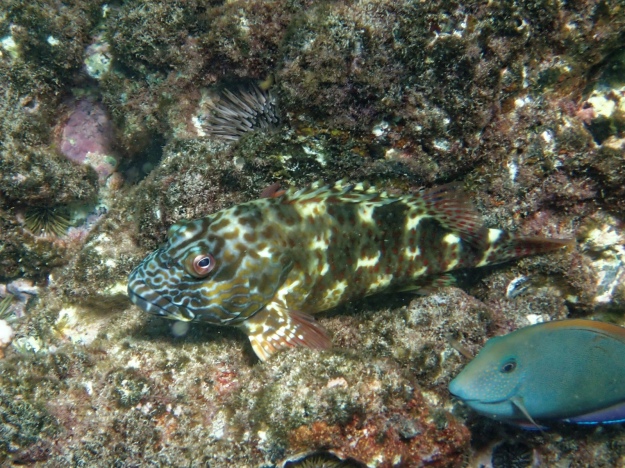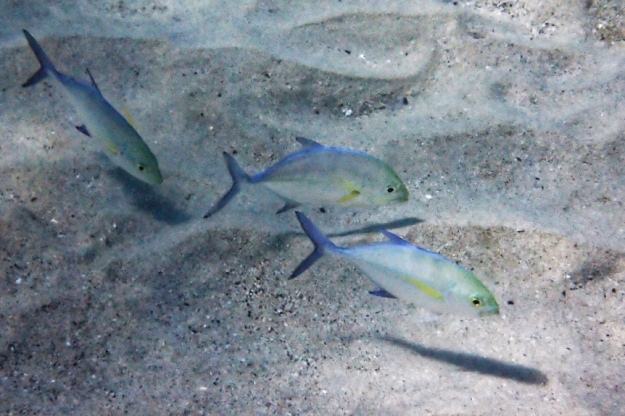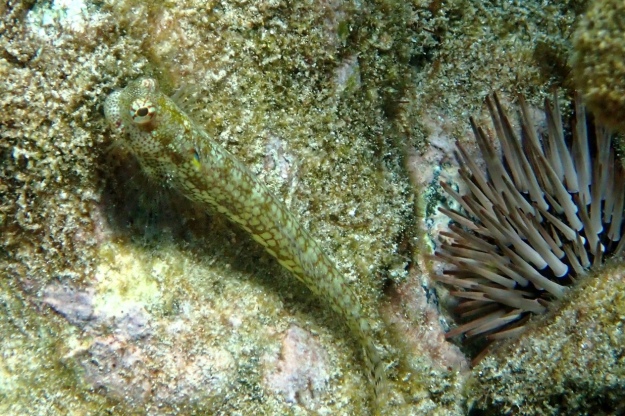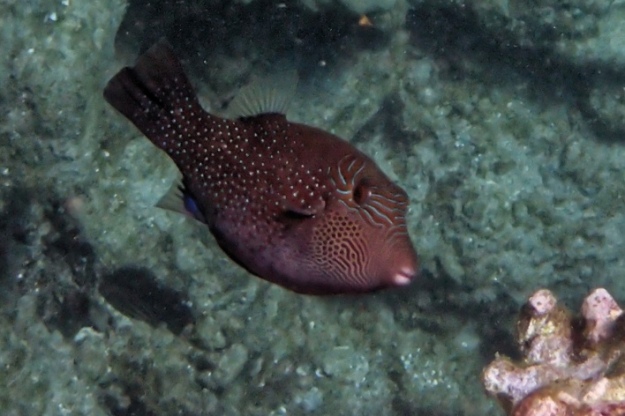On our December trip to Hawaii Hai brought Wendy and me out to a spot in Kawaihae Harbor where he’d found a colony of tiny, translucent shrimp—so-called long-armed shrimp, Cuapetes sp. The shrimp were living on the heavily overgrown remains of an old buoy suspended a couple of feet below low tide level. We saw several shrimp, but, vertebrate nut that I am, I paid more attention to the little fish living on the buoy than to the shrimp.
I lingered at the buoy for several minutes after Hai and Wendy had gotten their shrimp photos and moved on. It turned out there were at least three species of blenny living there. They were, like most blennies, tiny and cryptically colored to blend into their surroundings. These fish have a way of darting and freezing, blending into the background so well that the only way to spot them is to look for motion. There were probably several more blennies on the old buoy than I was able to find, but here are the three I did manage to spot:



The order Blenniiformes is huge, consisting of over 900 species worldwide. Hawaii has only around a dozen species, mostly inconspicuous bottom-dwellers. I have a particular fondness for these fish, and I’m not alone. Ned and Anna Deloach, world renowned authors, photographers, and general fish geeks have a blog devoted entirely to blennies. You might want to check it out: https://www.blennywatcher.com. You can see my numerous blenny posts by searching for “blenny” on this blog.
Oh yeah, here are some photos of the Long-armed shrimp we were originally looking for. Hai’s photos are a lot better than mine: https://kawaihaereef.org/page/2/. There’s a lot more great stuff on Hai’s blog.











